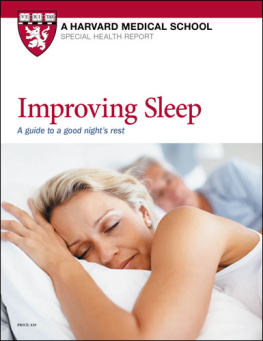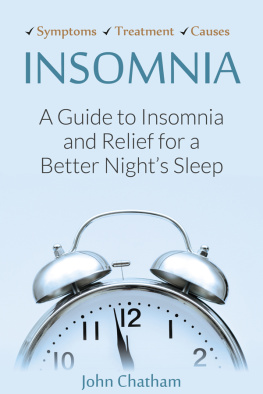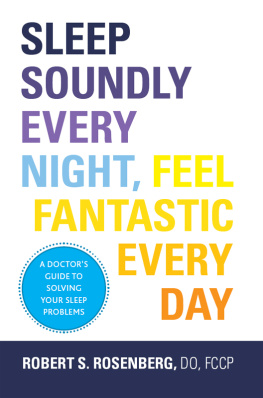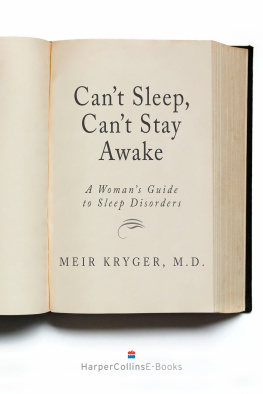
Improving Sleep
Dear Reader,
How do you feel when you wake up in the morning? Are you refreshed and ready to go, or groggy and grumpy? For many people, the second scenario is all too common. More than one in three adults get less than the recommended seven or more hours of sleep each night, according to the Centers for Disease Control and Prevention. Insomnia trouble falling or staying asleep is the most common complaint. But other chronic disorders, including sleep apnea, restless legs syndrome, or narcolepsy, can also contribute to a shut-eye shortfall. Sometimes, unavoidable stress or problems like a death in the family keep you up at night. But so can habits that you can control, such as drinking alcohol or caffeine at night or using brightly lit electronic devices too close to bedtime.
Whatever the cause, the toll of all that lost sleep on health, well-being, and productivity is enormous. Insufficient sleep can make you too tired to work efficiently, to exercise, or to eat healthfully. Over time, sleep deprivation increases the risk for a number of chronic health problems, including obesity, diabetes, high blood pressure, and heart disease. Whats more, according to a government report, one in 25 American drivers admitted to falling asleep while driving at least once in the previous month. Some estimates suggest drowsy driving accounts for up to a quarter of fatal highway crashes. And according to a 2017 report from the Rand Corporation, the United States loses an equivalent of 1.2 million working days because of insufficient sleep, which translates to economic losses of up to $411 billion each year.
Fortunately, you neednt fumble about in a fog of fatigue. This report features the latest information on sleep problems, ranging from insomnia to sleep-related eating disorder, and it details the various treatments available. Sleep medications are not necessarily the best option. Growing evidence backs the use of cognitive behavioral therapy, a drug-free approach to treating insomnia, which is now available not only through clinicians, but also via websites and smartphone apps. Youll learn about the many devices and procedures that are available for treating sleep apnea, as well as related techniques that can reduce snoring. Youll learn tips and tricks for coping with jet lag and how to get back on a normal schedule if youre a night owl. Other problems covered here include narcolepsy and restless legs syndrome. Whatever your sleep issue, youll learn about reliable, time-tested remedies to help you get the sleep you need for optimal health, safety, and well-being.
Sincerely,
Lawrence Epstein, M.D.
Medical Editor
Sleep mechanics
For centuries, scientists scrutinized minute aspects of human activity, but showed little interest in the time that people spent in sleep. Sleep seemed inaccessible to medical probing a subject best suited to poets and dream interpreters who could conjure meaning out of the void. It was thought to be no more than a natural response to the darkness and silence of night, when the brain could no longer react to the sensory stimulation of the day. As a result, scientists believed the brain simply turned off and remained unchanged throughout the night.
All that changed in the 1930s, when researchers found they could place sensitive electrodes on the scalp and record the signals produced by electrical activity in the brain to create electroencephalograms, or EEGs. When this technique revealed lively brain activity even in sleeping subjects, scientists realized that sleep did not represent a void, but was in fact a dynamic time, incorporating different stages with markedly different patterns of brain waves. Further study revealed that it is a period when the brain encodes new memories or information that it wants to keep (a process called consolidation), when it cleans out toxins, when growth and development occur, and when the immune system surveys the body for potential problems.
Far from being a luxury, sleep is now known to be essential, required for health and optimal functioning. In fact, sleep deprivation can be used as a form of torture. Yet many of us continue to get inadequate sleep either because we deliberately deprive ourselves of sleep or because we seem unable to get a good nights rest.
This report will delve into the many steps you can take to restore sleep quality. But first, it may help to examine the different stages of sleep and what scientists call sleep architecture, meaning the patterns of alternating sleep stages you pass through during the night.

Squaredpixels | Getty Images
Scientists used to think that sleep served no purpose, but was simply a response to the darkness at night. Now they know that sleep is essential to a persons health and well-being.
Quiet (non-REM) sleep
Scientists divide sleep into two major types: REM (rapid eye movement) sleep or dreaming sleep, and non-REM sleep, also known as quiet sleep. Surprisingly, they are as different from each other as either one is from waking.
Sleep specialists have called non-REM sleep an idling brain in a movable body. During this phase, thinking and most bodily functions slow down, but movement can still occur, and a person often shifts position while sinking into deeper stages of sleep.
To an extent, the idea of dropping into sleep parallels changes in brain-wave patterns at the onset of non-REM sleep. When you are awake, billions of brain cells receive and analyze sensory information and coordinate behavior by sending electrical impulses to one another. If youre fully awake, an EEG records a messy, irregular scribble of activity. Once your eyes are closed and your brain no longer receives visual input, brain waves settle into a steady and rhythmic pattern of about 10 cycles per second. This is the alpha-wave pattern, characteristic of calm, relaxed wakefulness (see Figure 1).
The transition to quiet sleep is a quick one that might be likened to flipping a switch that is, you are either awake (switch on) or asleep (switch off). Some brain centers and pathways stimulate the entire brain to wakefulness; others promote falling asleep. One brain chemical, hypocretin (also called orexin), seems to play an important role in regulating when the flip between states occurs and keeping you in the new state. Interestingly, people with a condition called narcolepsy often lack hypocretin, and as a result they frequently flip back and forth between sleep and wakefulness, suddenly falling asleep during the day or at other inappropriate times for short bouts known as sleep attacks.
Unless something disturbs the process, you proceed smoothly through the three stages of quiet sleep.
Figure 1: EEG brain-wave patterns during sleep 
Brain waves change dramatically during the different stages of sleep. |
Stage N1
In making the transition from wakefulness into light sleep, you spend about five minutes in stage N1 sleep. On the EEG, the predominant brain waves slow to four to seven cycles per second, a pattern called theta waves (see Figure 1). Body temperature begins to drop, muscles relax, and eyes often move slowly from side to side. People in stage N1 sleep lose awareness of their surroundings, but they are easily jarred awake. However, not everyone experiences stage N1 sleep in the same way: if awakened, one person might recall being drowsy, while another might describe having been asleep.
Next page







